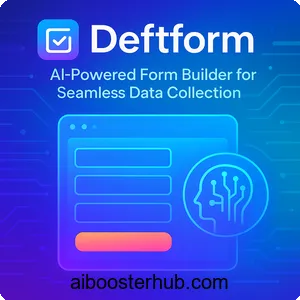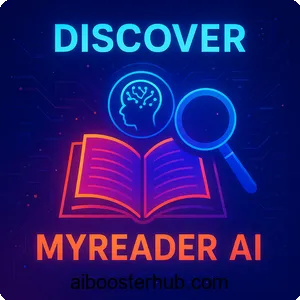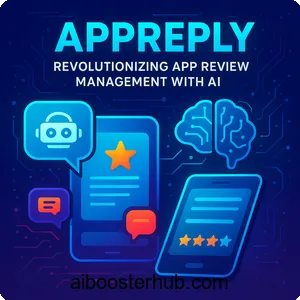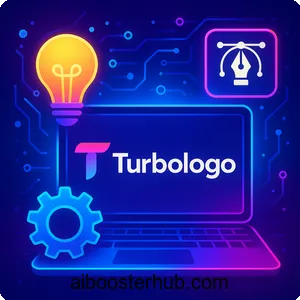SciSpace: Revolutionizing academic research with AI
In the rapidly evolving world of artificial intelligence, tools like SciSpace are transforming how researchers, students, and academics engage with scientific literature. This comprehensive article explores SciSpace, an AI-powered platform designed to streamline academic research.
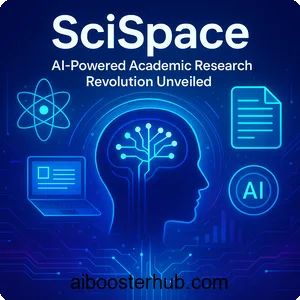
Content
Toggle1. Introduction to SciSpace
What is SciSpace?
SciSpace, formerly known as Typeset, is an AI-powered platform designed to simplify the academic research process. It leverages advanced machine learning and natural language processing to help users discover, understand, and manage scientific literature. With access to over 287 million scholarly articles, SciSpace offers a robust suite of tools tailored for researchers, students, and academics. Whether you’re conducting a literature review or drafting a research paper, SciSpace streamlines tasks that traditionally take hours, making it a go-to solution for anyone navigating the complexities of academic content. Its intuitive interface and AI-driven features make it particularly appealing for those new to research or seeking to enhance their workflow with cutting-edge technology.
The evolution of SciSpace
Originally launched in 2015 as Typeset, SciSpace began as a tool focused on simplifying research paper formatting. Founders Sai Kiran and Shanu Kumar recognized the broader challenges researchers face, such as time-consuming literature searches and difficulty understanding dense academic texts. Over time, SciSpace evolved into a comprehensive platform, integrating AI to address these pain points. By 2025, it has become a leader in the academic AI space, serving millions of users globally, from students to seasoned researchers. This evolution reflects the growing demand for tools that combine automation with intelligent insights, aligning perfectly with the needs of the AI-driven research community.
Why SciSpace matters in the AI era
In an age where data is abundant but time is scarce, SciSpace stands out by automating repetitive research tasks and providing actionable insights. Its ability to process vast datasets, understand complex queries, and deliver cited responses makes it a powerful ally for anyone working with scientific literature. For those interested in artificial intelligence, SciSpace exemplifies how AI can enhance productivity without replacing critical thinking. It’s not just a tool—it’s a research companion that empowers users to focus on innovation and discovery.
2. Key features of SciSpace
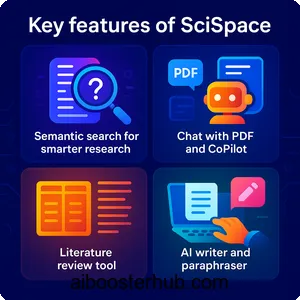
Semantic search for smarter research
SciSpace’s semantic search is a game-changer for literature discovery. Unlike traditional keyword-based searches, it allows users to input natural language questions, such as “What are the latest findings on AI in healthcare?” The platform then cross-references its database of over 287 million papers to deliver relevant results, complete with citations and simplified explanations of academic jargon. This feature saves time and ensures users find papers aligned with their research goals, making it ideal for both beginners and experienced researchers.
Chat with PDF and CoPilot
The Chat with PDF feature, powered by SciSpace’s AI assistant CoPilot, lets users interact with research papers as if conversing with a colleague. By uploading a PDF or highlighting text, users can ask questions like “What are the limitations of this study?” or “Explain this equation.” CoPilot provides real-time, cited responses, breaking down complex concepts into digestible explanations. Available as a browser extension, CoPilot also works on online papers, enhancing accessibility across platforms.
Literature review tool
Conducting a literature review can be daunting, but SciSpace’s literature review tool simplifies the process. Users can input a research question, and the platform generates a tabular summary of relevant papers, including TL;DR summaries, methods, limitations, and conclusions. This feature allows for quick comparison across multiple studies, helping researchers identify gaps and trends efficiently. It’s particularly useful for systematic reviews, though users should note that AI-driven searches may not be fully reproducible for strict systematic reviews due to algorithmic variability.
AI writer and paraphraser
SciSpace’s AI writer assists users in drafting academic content by offering autocomplete suggestions and real-time citation recommendations. The paraphraser tool allows users to rephrase complex text while maintaining an academic tone, with over 20 preset tones to choose from. These tools streamline the writing process, helping users overcome writer’s block and ensure their work is clear and professional.
Citation generator and AI detector
The citation generator supports over 9,000 citation styles, including APA, MLA, and Chicago, enabling users to create accurate references effortlessly. Additionally, the AI detector identifies AI-generated content in research materials, ensuring academic integrity. These features are invaluable for researchers aiming to maintain high standards in their work.
PDF-to-video and audio conversion
SciSpace offers unique tools like PDF-to-video, which transforms research papers into interactive video summaries with AI-generated narration. The audio conversion feature turns papers into podcasts, allowing users to consume research on the go. These innovative formats make complex content more accessible, especially for those who prefer visual or auditory learning.
3. Uses of SciSpace in academic and professional settings
For students
Students, particularly those new to research, benefit immensely from SciSpace. Its ability to summarize dense papers and explain jargon helps undergraduates and graduate students grasp complex concepts quickly. The platform’s tools, such as the literature review feature and AI writer, assist in crafting essays, theses, and dissertations with ease. By saving time on literature searches and formatting, students can focus on developing their ideas.
For researchers
Experienced researchers use SciSpace to streamline literature reviews, identify research gaps, and stay updated on trends. The platform’s ability to analyze multiple PDFs and extract key data points, such as methodologies or results, accelerates the research process. Additionally, the citation generator and AI detector ensure publications meet rigorous academic standards, making SciSpace a trusted tool for professional researchers.
For educators and librarians
Educators and librarians leverage SciSpace to guide students and patrons through research tasks. The platform’s integration into library services, such as at the BRIN Library in Indonesia, demonstrates its value in supporting literature review services. By providing tools to simplify complex papers, SciSpace empowers educators to teach research skills effectively.
For interdisciplinary collaboration
SciSpace’s vast database and collaborative features make it ideal for interdisciplinary projects. Researchers from different fields can share collections, annotate papers, and use the platform’s insights to bridge knowledge gaps. This fosters collaboration and innovation, particularly in fields like AI, where cross-disciplinary work is common.
4. Benefits of using SciSpace
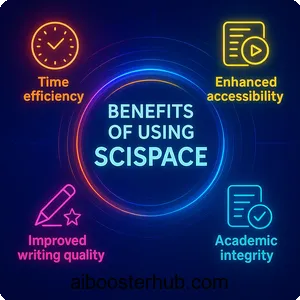
Time efficiency
SciSpace significantly reduces the time spent on research tasks. Features like semantic search and Chat with PDF allow users to find and understand papers in minutes rather than hours. Studies suggest users can save up to 70% of their research time, making SciSpace a vital tool for busy academics and professionals.
Enhanced accessibility
With tools like PDF-to-video and audio conversion, SciSpace makes research accessible to diverse audiences. Its mobile app and Chrome extension ensure users can access features on the go, while support for 13 languages broadens its global reach. This accessibility is particularly valuable for non-native English speakers and those with varied learning preferences.
Improved writing quality
The AI writer and paraphraser tools help users produce clear, well-structured academic content. By suggesting citations and rephrasing text, SciSpace ensures papers are polished and professionally formatted, enhancing the overall quality of research outputs.
Academic integrity
The AI detector and citation generator promote ethical research practices by identifying AI-generated content and ensuring accurate referencing. These features are crucial for maintaining credibility in academic and professional settings.
Personalized research insights
SciSpace’s machine learning capabilities adapt to user interactions, offering personalized recommendations for papers and topics. This continuous learning ensures the platform becomes more valuable over time, tailoring insights to individual research needs.
5. How to use SciSpace: A step-by-step guide
Getting started
To begin, visit the SciSpace website and sign up for a free account. No registration is required to explore basic features, but an account unlocks the full suite of tools. Once logged in, familiarize yourself with the dashboard, which provides access to search, library, and writing tools.
Searching for papers
Use the semantic search bar to enter a research question or topic. For example, type “How does AI impact climate change research?” SciSpace will return a list of relevant papers with summaries and citations. Apply filters like publication year or journal ranking to refine results. Save papers to your library for later analysis.
Using Chat with PDF and CoPilot
Upload a PDF to your library or highlight text in an online paper using the Chrome extension. Ask CoPilot questions like “What are the key findings of this paper?” or “Explain this table.” The AI will provide cited responses, which you can save as notes for future reference.
Conducting a literature review
Navigate to the literature review tool and input your research question. SciSpace will generate a table summarizing relevant papers, including abstracts, methods, and limitations. Use custom columns to extract specific data points, such as study locations or model organisms, for in-depth analysis.
Writing and citing
Start a document in SciSpace’s notebook feature. As you write, use the AI writer for autocomplete suggestions and the paraphraser to refine text. Generate citations by selecting the desired style, and use the AI detector to ensure your content is original. Export your work to tools like Zotero for further organization.
Exploring multimedia features
Convert a paper to a video or podcast using the PDF-to-video or audio conversion tools. These features are accessible from the library and are ideal for sharing research with broader audiences or consuming content on the go.
6. Why SciSpace stands out in the AI research landscape
A comprehensive research ecosystem
Unlike many AI tools that focus on a single aspect of research, SciSpace offers an all-in-one solution. From literature discovery to writing and publication, its integrated features create a seamless workflow, reducing the need for multiple tools.
User-friendly design
SciSpace’s intuitive interface makes it accessible to beginners while offering advanced features for seasoned researchers. The platform’s clean design and mobile compatibility ensure a smooth user experience across devices.
Continuous innovation
SciSpace’s commitment to evolving its AI capabilities sets it apart. Upcoming features, such as enhanced multilingual support and advanced research trend prediction, promise to keep the platform at the forefront of academic research tools.
Community and collaboration
With over a million users and integrations with libraries and academic institutions, SciSpace fosters a collaborative research community. Its tools for sharing collections and annotating papers make it a hub for teamwork and knowledge exchange.
Empowering the AI-curious
For those passionate about artificial intelligence, SciSpace is a practical example of AI’s transformative potential. It demonstrates how machine learning and natural language processing can enhance human creativity and productivity, making it a must-have for anyone exploring AI’s role in academia.
7. Conclusion
SciSpace is more than just an AI tool—it’s a revolutionary platform that empowers researchers, students, and professionals to navigate the complex world of academic literature with ease. Its semantic search, Chat with PDF, and multimedia features make research faster, more accessible, and engaging. By streamlining literature reviews, enhancing writing quality, and promoting academic integrity, SciSpace addresses the diverse needs of the research community. Whether you’re a student tackling your first thesis or a researcher exploring new frontiers, SciSpace is a powerful ally in your academic journey. Dive into SciSpace today and experience how AI can transform your research process.

